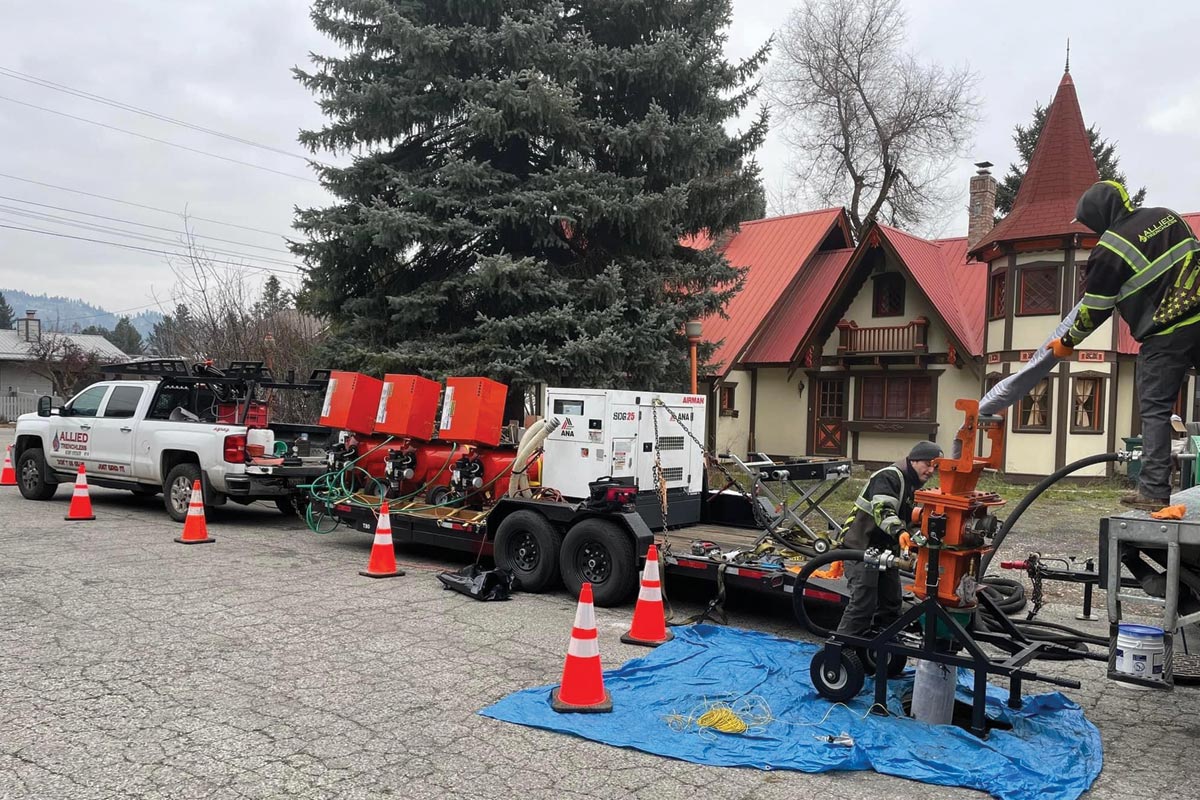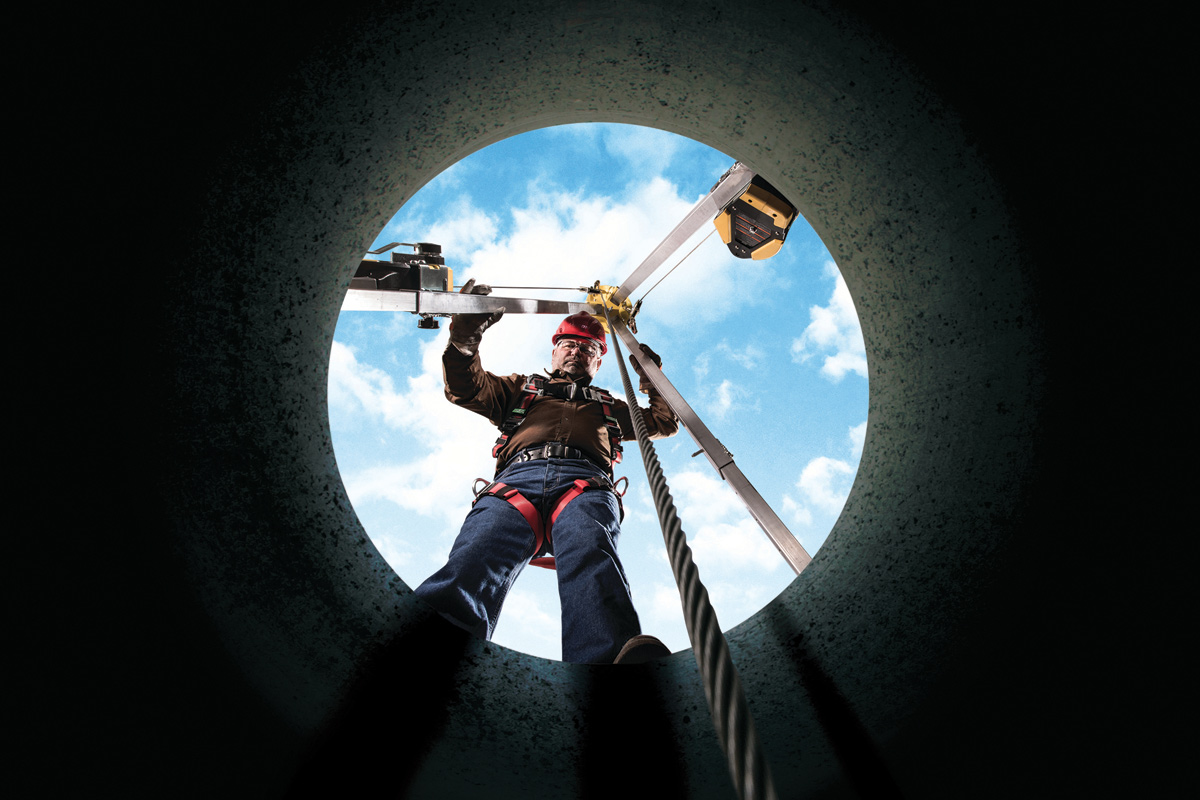
Vista, California Turns to High Strength Fiber-Reinforced Polymer Concrete to Rehab Culvert
September 20, 2016
Located in the heart of Southern California’s industrial and commercial hub, the City of Vista is home to a master-planned, 80-acre business park first developed in 1987. As part of its construction, the City installed a 15-ft diameter corrugated aluminum multi-plate arch culvert (CMP) to cross under the main thoroughfare. The culvert provides maintenance vehicles and trucks access to the City’s sewer easement, serves as a crossing for wildlife, and is also used by local joggers and bicyclists.Beginning in 2002, corrosion of the culvert pipe structure progressed steadily and the City began seeking recommendations from engineering consultants to either remove or rehabilitate the structure. Any rehabilitation solution needed to be constructible with a limited work area footprint and minimize impacts to sensitive areas surrounding the project site, including coastal sage scrub and wetland habitats.
“We needed to make sure that all work was performed inside the culvert,” said Greg Mayer, P.E., City Engineer, City of Vista/Buena Sanitation District. “To accomplish that goal, we established staging sites in disturbed dirt areas located within 500 ft from both the upstream and downstream openings of the culvert.”
Rehabilitation Requirements
The primary design criterion was to support the earthen embankment and any live vehicular loading. Another requirement was that the exposed culvert material be non-flammable and resistant to heat, as City staff had observed campfire remnants within the culvert. Due to the oval shape of the pipe and its use as a roadway underpass for both sewer and fire trucks, rehabilitation needed to follow the same profile of the existing CMP.
These design requirements eliminated some options such as high-density polyethylene spiral lining and epoxy lining systems. Consequently, concrete or steel rehabilitation systems were recommended to meet the design criteria.
Rehabilitation Solution
The City also considered several rehabilitation alternatives using the existing pipe. Sliplining was rejected as a potential option, as it would have reduced the diameter of the pipe beyond design limitations, and impeded service trucks’ ability to drive through the pipe. Shotcrete was similarly eliminated due to its inability to achieve the final design strengths and thickness requirements.
RELATED: A GeoPolymer Solution: Controlling Stormwater Infliltration in California
Seeking an alternative that would not only rehabilitate and stabilize the pipe, but also satisfy environmental requirements, the City chose a design/build solution from Inland Pipe Rehabilitation (IPR) of Houston, and Milliken Infrastructure Solutions (MIS) of Spartanburg, S.C. The solution involved applying a high strength fiber-reinforced polymer concrete liner directly to the host pipe in layers, and requiring no specialized bonding application or engineered system.
EcoCast, which is specifically developed for very large diameter structures such as this one, combines advanced installation and application equipment with a custom-formulated geopolymer, GeoSpray mortar. Unlike traditional cement mortars, the geopolymer self-bonds, eliminating cold joints between layers. The application process required no digging, virtually eliminating traffic delays, and results in improved performance and strength, and lower total installed costs than alternative methods.
Microfiber and polymer additives in the geopolymer helped the structure to achieve a minimum 28-day compressive strength of 8,000 psi and 28-day flexural strength of 1,500 psi in accordance with ASTM C78. Because the original structure included expansion joints, those joints were mirrored in the liner design. The design also included a thickness requirement of 3.2 in., and called for a layer of welded wire mesh due to seismic loading concerns in the area.

For this project, Inland Pipe Rehabilitation determined the best method of application was to spray-apply the primary coating, then follow up with troweling to create a smooth finish.
Unforeseen Challenge
During the rehabilitation project, the IPR crew encountered movement in the pipe after removal of the asphalt roadway, which had previously locked the structure in place. Replacing the roadway with a structural slab that would be traffic rated and strong enough for large sewer and fire trucks to pass through presented a major challenge. It needed to be thick enough — and consist of enough rebar — to withstand the anticipated loads of large trucks.
However, remaining within the rehabilitation envelope meant constructing a slab that could be no more than 5 in. thick, a full 4 in. less than most conventional traffic-rated concrete slabs. EcoCast’s high strength characteristics made it the perfect material for the new slab construction. IPR imported 5 in. of gravel, fixed #2 rebar and poured a 5-in. thick layer of geopolymer.
RELATED: Innovative Geopolymer Rehabilitation Process Proven Effective in Repairing Deteriorating Stormwater System
“Regular concrete would have required a much thicker slab because of its lower compressive strength,” said Rob McCrae, chief operating officer, Inland Pipe Rehabilitation. “Using EcoCast, we were able to achieve the HS20 traffic loading required and stay within the allowable envelope.”
Installation/Construction
The application process inside the culvert was simple and easy for the installation team. EcoCast can be applied with a precision-controlled spray application apparatus, or troweled on, depending on the type of structure. For this project, IPR determined the best method of application was to spray-apply the primary coating, then follow up with troweling to create a smooth finish. One of the major advantages of EcoCast is that a crew can layer the material, allowing the application of evenly applied product up to the required thickness, regardless of unforeseen stops or starts.
In addition to installing the liner and construction of a new roadway slab, the project construction included grading a new access road and installation of a SWPPP measure due to the work being performed next to a stream. With a crew of only five installers and one project manager, IPR completed the project within budget, and within the estimated two-month time frame with no overtime or weekend work required.
RELATED: 2016 Trenchless Technology Roundtable —Trenchless Across the Continent
Checking for Quality
Upon completion, several measures were taken to verify the thickness of the installation. IPR drilled set screws into the crown of the CMP rib and measured the required 3.2 in., as per engineered design. Additionally, IPR and the City of Vista commissioned a laboratory to conduct comprehensive material testing and ensure design criteria were met. Twenty samples were tested and all were successful.
“A big factor in stormwater rehabilitation is the ability to achieve the same structural requirement with less material and no loss in capacity,” said McCrae. “EcoCast satisfies that requirement, not only with the circular rehabilitation it is known for, but also for engineering appropriate slab thickness in response to construction constraints.”
Joe Royer is development manager at Milliken Infrastructure Solutions. Fil Borroni is director of sales at Inland Pipe Rehabilitation.




